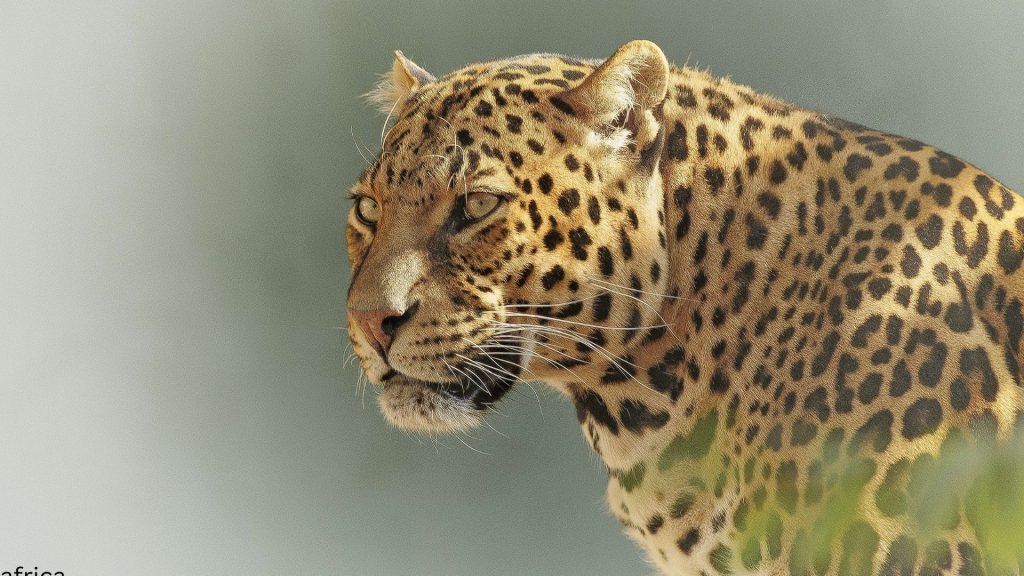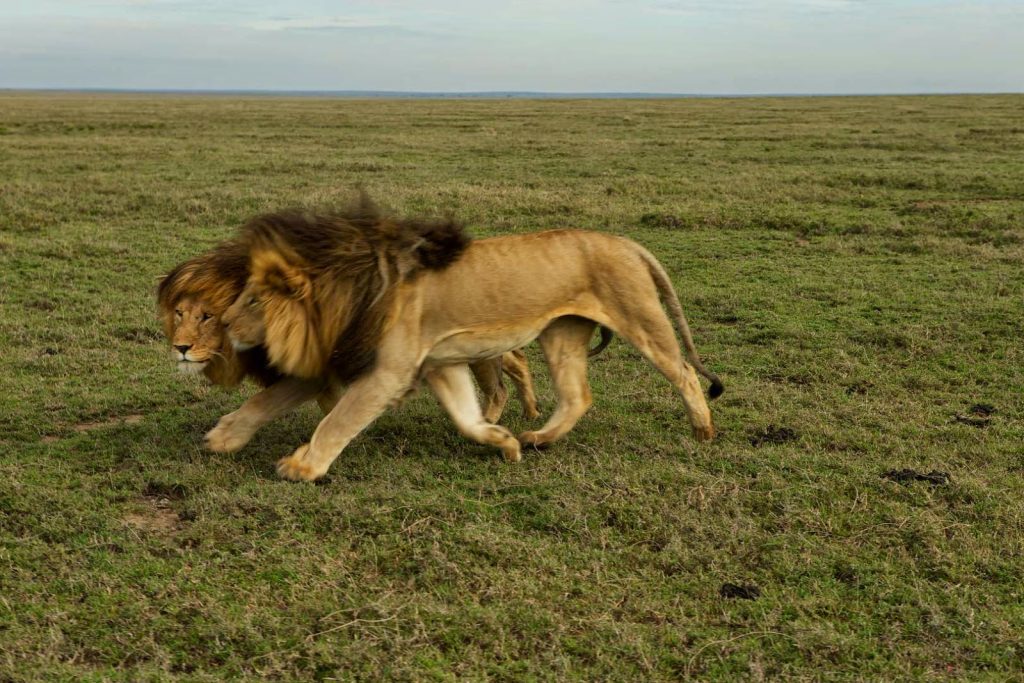Great Wildebeest Migration
This fantastic nature show occurs annually in the Maasai Mara/Serengeti wildebeest migration. The numbers alone are hard to believe: up to two million animals—wildebeest, zebra, and gazelles—move clockwise around this enormous ecosystem, driven by ancient instincts to find fresh grazing and water.
One of the most sought-after experiences for wildlife and nature enthusiasts, the Great Migration is the ever-moving circular migration of over a million animals across the Serengeti-Mara ecosystem. The ever-moving columns of wildebeest, joined by a host of companions, follow an age-old route in search of grazing and water. This journey takes them across the plains of the Masai Mara in Kenya, all the way south into Tanzania, through the Serengeti to the edge of the Ngorongoro Crater, before circling up and around in a clockwise direction. Along the way, high drama is always present as predators take thousands of animals, and thousands more are born, replenishing the numbers and sustaining the circle of life.
It’s a drama on a truly epic scale: the migrating herds undergo all manner of challenges and hardships as they move from region to region, and are constantly under attack from predators, none more so than from Africa’s big cats and the notoriously huge crocodiles that lie in wait at various river crossing points. The great Serengeti wildebeest migration is the movement of vast numbers of wildebeest, accompanied by large numbers of zebra and smaller numbers of Grant’s gazelle, Thomson’s gazelle, eland, and impala. These move in an annual pattern that is fairly predictable. They migrate throughout the year, constantly seeking fresh grazing and, it’s now thought, better-quality water.
How the Great Migration moves throughout the year
Whether the wildebeest are dropping calves or attempting to cross rivers while avoiding predators, the migration is constantly on the move throughout the year. Read on to learn where the Great Migration tends to be during different times of the year.
January, February, and March Migration
Around January each year, the migration finishes a southward trek, moving along the eastern edge of the Serengeti and into the Ngorongoro Conservation Area. Here, the plains are rich in nutritious grass, providing the herds with the best conditions for raising their newborn calves.
Although there is no real beginning or end to this migratory circuit — other than birth and death — it seems reasonable to call the wildebeests’ birthing season the start of the migration. Around late January or February, the herds occupy the short-grass plains that spread over the lower northern slopes of the Ngorongoro Crater highlands and around Olduvai Gorge. Some 400,000 calves are born here within two to three weeks, or nearly 8,000 new calves every day.
The abundance of vulnerable young calves means the surrounding predators also spring into action, hunting with ease due to the sheer number of wildebeest. Those interested in witnessing calving and the drama of big cats on the hunt should look to Asilia’s migration camps in the southern Serengeti, which provide direct access: Olakira, Kimondo, and Ubuntu.
April and May Migration
After bearing their young in February and March, around April, the wildebeest herds drift northwest toward the fresher grass of the central Serengeti, drawing thousands of zebra and smaller groups of antelope. By May, columns of wildebeest stretch for several kilometers as the animals start to assemble by the Moru Kopjes, close to Dunia Camp, one of the few camps in the Serengeti that offers migration viewing at this time of year. Mating season begins toward the end of May, and male wildebeests battle head-to-head. Throughout ‘the rut,’ the journey continues at leisure with the wildebeest, zebra, and gazelle grazing as they go along.
Gradually, the movement gathers momentum and the wildebeest start to mass in the Serengeti’s Western Corridor. At this time of year, the Ubuntu Migration Camp will have relocated to follow the migration and provide access to watch the wildebeest cross the Grumeti River. The herds form in huge numbers along the pools and channels of the river, which they have to cross to continue on their journey. This may not be as spectacular as the famous Mara crossings, but there are still enough wildebeest to provide the Grumeti crocs with a veritable feast. It is worth noting that May is low season at Ubuntu. Safaris at this time offer great value since there are relatively low numbers of tourists in the Serengeti, yet the wildlife viewings remain excellent.
June and July Migration
In June, the dry season starts with large concentrations of wildebeest in the Western Serengeti and on the southern banks of the Grumeti River. Each migrating animal must face the challenge of crossing the crocodile-infested river—the first of many daunting and tense river encounters.
As June moves into July, the hundreds of thousands of wildebeest and zebra continue to head north along the park’s western edge toward an even riskier barrier: the Mara River in the north of the Serengeti. These river crossings are arguably one of Earth’s most exciting wildlife events. They usually begin at the onset of the high season in July, but the timing depends on nature.
The herds will typically be found in the Northern Serengeti in July. Later in July, those animals that have successfully crossed the Mara River will also be found in the Masai Mara, where guests of Rekero Camp can watch river crossings right from the main deck of the camp on their Kenyan safari. At this time, daily river crossings can be seen at the Mara and Talek rivers, both often central to incredible scenes.
August, September, and October Migration
By August, the herds had faced the challenge of crossing the Mara River and were spread throughout the Masai Mara’s northern region, with many remaining in the north of the Serengeti. In years when the river is in full flow, the panic and confusion at the crossings — combined with waiting predators and surging currents — can cause massive loss of life. But, even in years of gently flowing water, the crocs take their toll, not to mention the lions and other large predators that patrol the banks, ready to ambush any wildebeest that makes it to the other side. There is no single crossing: at some spots, there are just a few individuals, while others see a mass of animals moving without a break for hours.
By September to October, the main chaos had ended, and the migrating columns had gradually moved eastward. However, the wildebeest will face the heavy waters of the Mara River once more as they prepare to cross it again for their return journey southward.
November and December Migration
After the East African short rains in late October and early November, the wildebeest move down from Kenya and into the eastern limits of the Serengeti past Namiri Plains, an area known for outstanding cheetah sightings. By December, they are spread throughout the east and southern reaches.
In the early months of the new year, the grasses in the deep south of the Serengeti are lush with rain. This attracts herds of wildebeest and hundreds of thousands of zebras and other plains animals. The cycle continues as the calving season starts once again.
GREAT MIGRATION FACTS
- Over 1.35 million western white-bearded wildebeest eat about 4,800 tons of grass daily.
- Over 250,000 calves are born each year, with four-fifths being born within a short calving period of just a few weeks on the short grass plains period of just a few weeks on the short grass plains mid-February (8000-12000 births per day). About 70,000 of these calves will die each year as a result of predation, drowning, separation from mother, etc. Overall, about half of them will survive adulthood.
- The calves are mobile within 3-7 minutes and can keep up with the herd soon after.
- Around 300,000 female wildebeest become pregnant in less than a month during the rut when bulls aggressively compete with each other and can be seen actively protecting temporary territories.
- The short grass plains between Nabi Gate and Ngorongoro highlands, where wildebeest prefer to calve, are highly nutritious as a result of the volcanic ash that fell in the area thousands of years ago. These grasses take up calcium, sodium, nitrogen, and phosphorus from the shallow soil, which is valuable for pregnant and later lactating cows.
- The Serengeti-Mara-Ngorongoro Ecosystem relies on the annual migration of about 1.6 million animals(wildebeest and Zebra) to sustain its integrity and health.
- The wildebeest is known as a “keystone species,” shaping the environment in which it lives, consuming over 1.7 million tons of grass each year. It opens up large tracts of pasture for other species, such as zebras, hartebeests, and gazelles. In other words, it plays a vital role as a “cog” in making the Serengeti’s grasslands diverse and productive. The migration alone deposits 3500 tons of dung into the ecosystem each day (about 70 train carriage loads per day!), providing valuable nourishment for the vegetation and serving as food for approximately 100 different species of dung beetles.
- The Mara River is the only source of water in the Serengeti that can sustain the great migration during the dry season. If the river dries up as a result of dams and deforestation upstream, it will be a massive disaster in which about 500,000 wildebeest would likely die in the first year.



